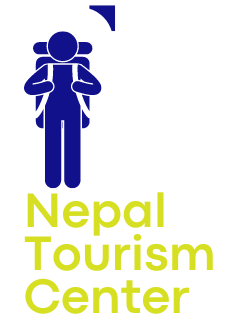Nestled in the breathtaking Khumbu region of Nepal, Tengboche Monastery is a spiritual haven for Buddhist devotees and trekkers alike. Known for its stunning Himalayan views, rich cultural heritage, and deep spiritual significance, it is a must-visit destination for travelers seeking both adventure and peace. In this blog, we explore Tengboche Monastery’s location, religious significance, trekking experience, festivals, spiritual essence, and intriguing historical facts.
Where is Tengboche Monastery Located?
Tengboche Monastery, also known as Dawa Choling Gompa, is situated at an altitude of 3,867 meters (12,687 feet) in the Solukhumbu district of Nepal. It lies within Sagarmatha National Park, a UNESCO World Heritage Site, surrounded by some of the highest peaks in the world, including Mount Everest, Ama Dablam, Lhotse, and Nuptse. The monastery is a key stop along the Everest Base Camp (EBC) trek, offering mesmerizing views and a tranquil atmosphere for trekkers and pilgrims.
Religious and Cultural Significance
Tengboche Monastery follows the Nyingma school of Tibetan Buddhism and is the most important religious center in the Everest region. The monastery is home to a community of Buddhist monks who dedicate their lives to meditation, scripture recitation, and preserving ancient Buddhist traditions. It houses a 20-foot-tall statue of Lord Buddha, intricate thangka paintings, and sacred relics that attract thousands of pilgrims every year.
According to legend, in the 16th century, the revered Lama Sangwa Dorje meditated in Tengboche and left his footprints and hand imprints in solid rock, which can still be seen near the monastery entrance. He prophesied that a great monastery would one day be built here, and centuries later, his vision came true. Interestingly, the rock cracked during the devastating fire in 1989, which destroyed the monastery, but remnants of it still remain as a testament to its spiritual history.
Trekking to Tengboche Monastery
Trekking to Tengboche Monastery is one of the highlights of the Everest Base Camp trek. It is typically reached on the fifth day of the journey from Lukla. The trail passes through lush forests, suspension bridges, and Sherpa villages, with a steep but rewarding ascent from Phunki Tenga.
Trekking Details:
- Starting Point: Lukla
- Trek Duration: 4-5 days to Tengboche
- Difficulty Level: Moderate
- Best Time to Visit: Spring (March-May) and Autumn (September-November)
- Permit Required: Sagarmatha National Park Entry Permit & Khumbu Pasang Lhamu Permit
Trekkers often stop at Namche Bazaar, the bustling Sherpa town, before heading towards Tengboche. The monastery provides a perfect resting point with breathtaking sunrise and sunset views over Everest and Ama Dablam.
Spiritual Experience at Tengboche
Tengboche is more than just a monastery; it is a spiritual retreat for those seeking inner peace. The sound of monks chanting, the fluttering prayer flags, and the crisp mountain air create a meditative atmosphere. Many mountaineers, including legendary climbers Sir Edmund Hillary and Tenzing Norgay, sought blessings from the monastery before their Everest expeditions. Visitors can attend prayer sessions, engage in silent meditation, and immerse themselves in Buddhist teachings.
Festivals Celebrated at Tengboche Monastery
The most famous festival at Tengboche is Mani Rimdu, celebrated in October or November. This 19-day festival marks the victory of Buddhism over Bon, the ancient shamanistic religion of Tibet. The festival features masked dances, sacred rituals, and prayers, attracting locals and tourists alike. The three main days of the festival are open to the public, offering a rare glimpse into Tibetan Buddhist culture.
How to Reach Tengboche Monastery
There are two primary ways to reach Tengboche Monastery:
- By Trekking:
- Take a 35-minute flight from Kathmandu to Lukla
- Trek via Phakding → Namche Bazaar → Tengboche (4-5 days)
- By Helicopter:
- Helicopter tours from Kathmandu offer a quick way to visit Tengboche, providing aerial views of Everest and the surrounding peaks.
Things to Do at Tengboche Monastery
- Explore the Monastery: Witness monks performing rituals and admire the detailed Buddhist artwork.
- Attend a Prayer Ceremony: Experience the morning and evening puja sessions inside the monastery.
- Meditate in a Sacred Space: The serene environment makes Tengboche an ideal place for meditation and self-reflection.
- Enjoy Himalayan Views: Capture stunning panoramic views of Mount Everest, Ama Dablam, and Lhotse.
- Visit the Tengboche Bakery: Treat yourself to fresh coffee and pastries at one of the world’s highest bakeries.
Interesting Stories & Facts About Tengboche Monastery
- Rebuilt Multiple Times: The monastery was destroyed by an earthquake in 1934 and later burned down in a fire in 1989. It was rebuilt with the support of international donors.
- The Footprints of Lama Sangwa Dorje: The rock bearing his footprints cracked in the fire but still remains at the monastery entrance.
- The Blessing Spot for Mountaineers: Many climbers, including Tenzing Norgay and Sir Edmund Hillary, received blessings from Tengboche monks before summiting Everest.
- Sherpa Cultural Hub: The monastery serves as a spiritual and cultural center for the Sherpa community, hosting important Buddhist ceremonies.
- Yeti Legends: Local stories suggest that Yeti footprints have been spotted in the forests surrounding Tengboche.
Tengboche Monastery is a symbol of faith, resilience, and tranquility in the Everest region. Whether you are a trekker, a spiritual seeker, or a cultural enthusiast, visiting this sacred place will leave you with unforgettable memories. With its majestic mountain backdrop, deep-rooted Buddhist traditions, and legendary history, Tengboche offers an experience that is truly one of a kind.
If you’re planning a trek to Everest Base Camp or looking for a spiritual retreat in the Himalayas, make sure to add Tengboche Monastery to your itinerary!

Leave a Reply